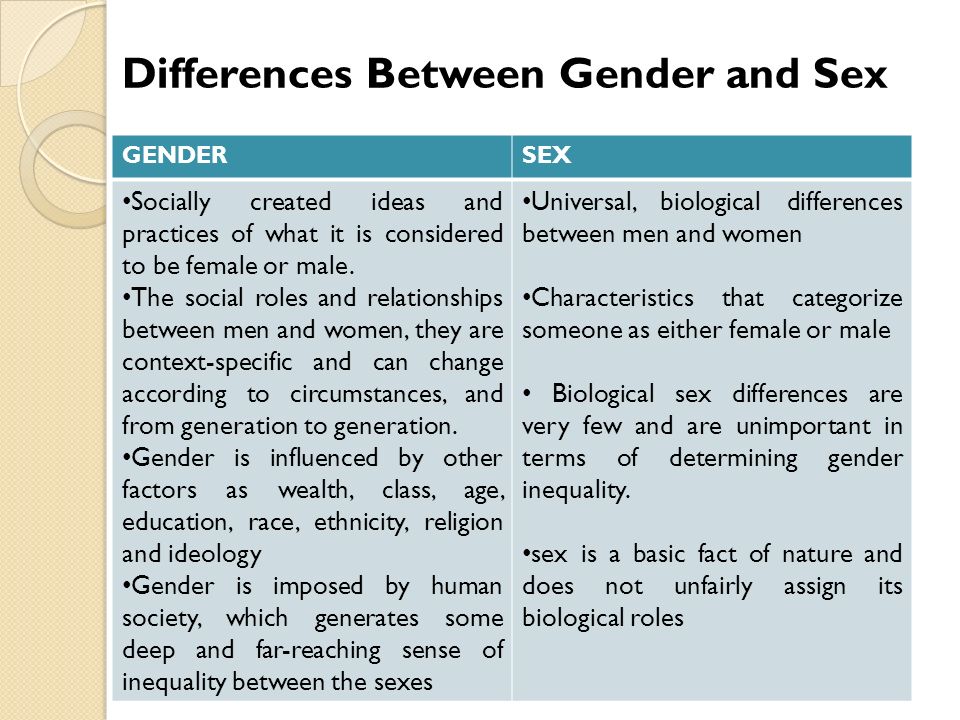Relevance: Stratification and Mobility: Dimensions – Social stratification of class, status groups, gender, ethnicity and race.
INTRODUCTION
The sociology of gender is one of the largest subfields within sociology and features theory and research that critically interrogates the social construction of gender, how gender interacts with other social forces in society, and how gender relates to social structure overall.
Sociologists within this subfield study a wide range of topics with a variety of research methods, including things like identity, social interaction, power and oppression, and the interaction of gender with other things like race, class, culture, religion, and sexuality, among others.
The Difference Between Sex and Gender

To understand the sociology of gender one must first understand how sociologists define gender and sex. Though male/female and man/woman are often conflated in the English language, they actually refer to two very different things: sex and gender.
The former, sex, is understood by sociologists to be a biological categorization based on reproductive organs. Most people fall into the categories of male and female, however, some people are born with sex organs that do not clearly fit either category, and they are known as intersex. Either way, sex is a biological classification based on body parts.
Gender, on the other hand, is a social classification based on one’s identity, presentation of self, behavior, and interaction with others. Sociologists view gender as learned behavior and a culturally produced identity, and as such, it is a social category.
The Social Construction of Gender
That gender is a social construct becomes especially apparent when one compares how men and women behave across different cultures, and how in some cultures and societies, other genders exist too.
In Western industrialized nations like the U.S., people tend to think of masculinity and femininity in dichotomous terms, viewing men and women as distinctly different and opposites. Other cultures, however, challenge this assumption and have less distinct views of masculinity and femininity.
For example, historically there was a category of people in the Navajo culture called berdaches, who were anatomically normal men but who were defined as a third gender considered to fall between male and female. Berdaches married other ordinary men (not Berdaches), although neither was considered homosexual, as they would be in today’s Western culture.
What this suggests is that we learn gender through the process of socialization. For many people, this process begins before they are even born, with parents selecting gendered names on the basis of the sex of a fetus, and by decorating the incoming baby’s room and selecting its toys and clothes in color-coded and gendered ways that reflect cultural expectations and stereotypes.
Then, from infancy on, we are socialized by family, educators, religious leaders, peer groups, and the wider community, who teach us what is expected from us in terms of appearance and behavior based on whether they code us as a boy or a girl. Media and popular culture play important roles in teaching us gender too.
One result of gender socialization is the formation of gender identity, which is one’s definition of oneself as a man or woman. Gender identity shapes how we think about others and ourselves and also influences our behaviors.
For example, gender differences exist in the likelihood of drug and alcohol abuse, violent behavior, depression, and aggressive driving. Gender identity also has an especially strong effect on how we dress and present ourselves, and what we want our bodies to look like, as measured by “normative” standards.
Major Sociological Theories of Gender
Each major sociological framework has its own views and theories regarding gender and how it relates to other aspects of society.
During the mid-twentieth century, functionalist theorists argued that men filled instrumental roles in society while women filled expressive roles, which worked to the benefit of society. They viewed a gendered division of labor as important and necessary for the smooth functioning of a modern society. Further, this perspective suggests that our socialization into prescribed roles drives gender inequality by encouraging men and women to make different choices about family and work.
For example, these theorists see wage inequalities as the result of choices women make, assuming they choose family roles that compete with their work roles, which renders them less valuable employees from the managerial standpoint.
However, most sociologists now view this functionalist approach as outdated and sexist, and there is now plenty of scientific evidence to suggest that the wage gap is influenced by deeply ingrained gender biases rather than by choices men and women make about family-work balance.
A popular and contemporary approach within the sociology of gender is influenced by symbolic interactionist theory, which focuses on the micro-level everyday interactions that produce and challenge gender as we know it. Sociologists West and Zimmerman popularized this approach with their 1987 article on “doing gender,” which illustrated how gender is something that is produced through interaction between people, and as such is an interactional accomplishment. This approach highlights the instability and fluidity of gender and recognizes that since it is produced by people through interaction, it is fundamentally changeable.
Within the sociology of gender, those inspired by conflict theory focus on how gender and assumptions and biases about gender differences lead to the empowerment of men, oppression of women, and the structural inequality of women relative to men.
These sociologists see gendered power dynamics as built into the social structure, and thus manifested throughout all aspects of a patriarchal society.
For example, from this viewpoint, wage inequalities that exist between men and women result from men’s historic power to devalue women’s work and benefit as a group from the services that women’s labor provides.
Feminist theorists, building on aspects of the three areas of theory described above, focus on the structural forces, values, world views, norms, and everyday behaviors that create inequality and injustice on the basis of gender. Importantly, they also focus on how these social forces can be changed to create a just and equal society in which no one is penalized for their gender.
For more such notes, Articles, News & Views Join our Telegram Channel.
Click the link below to see the details about the UPSC –Civils courses offered by Triumph IAS. https://triumphias.com/pages-all-courses.php


that was amazing article
gang bang